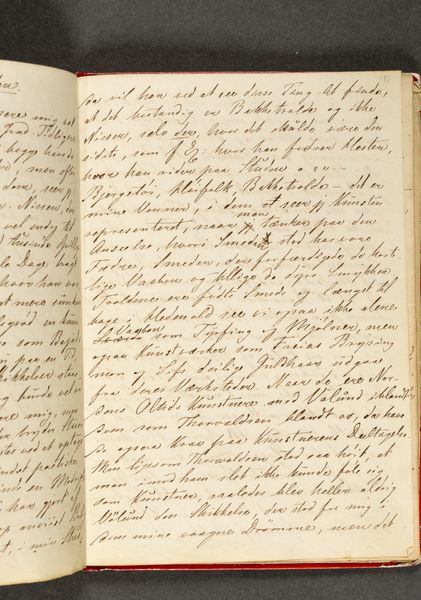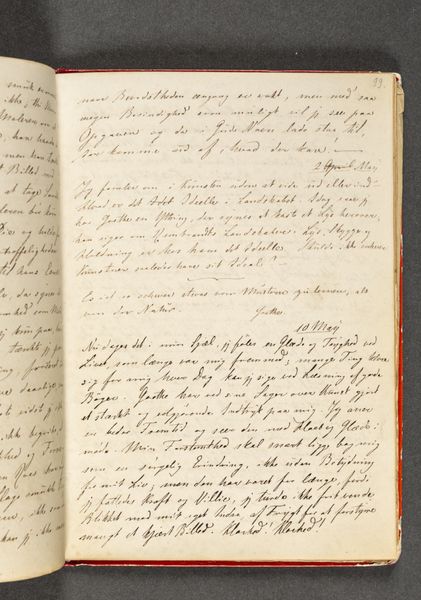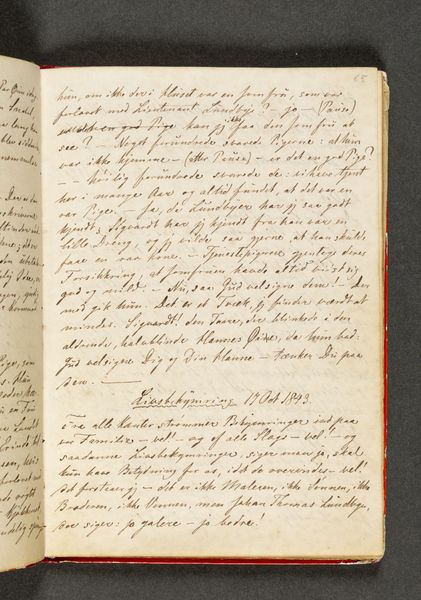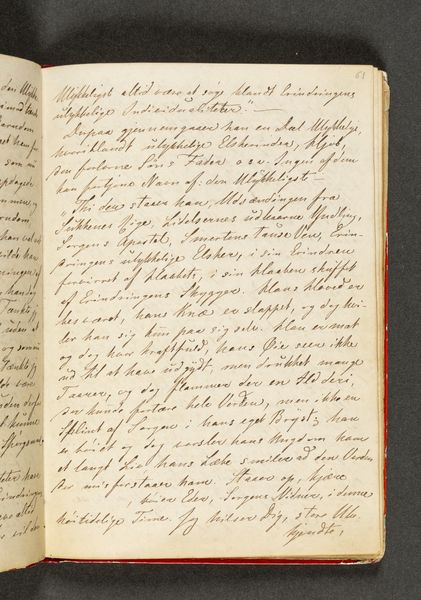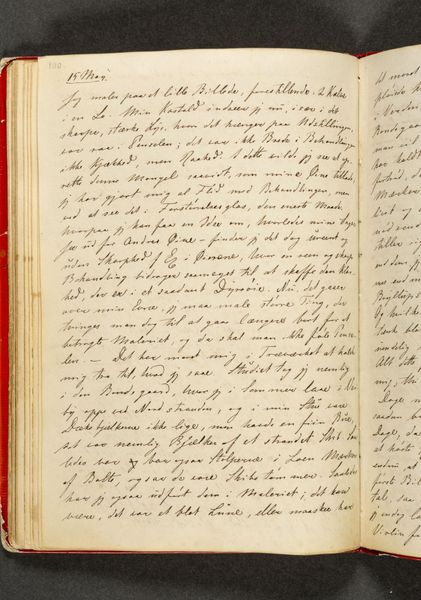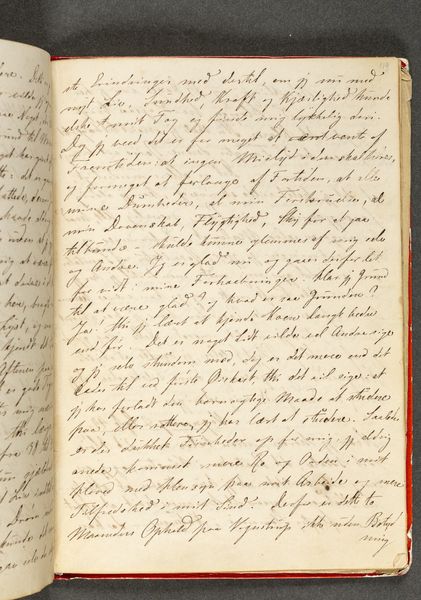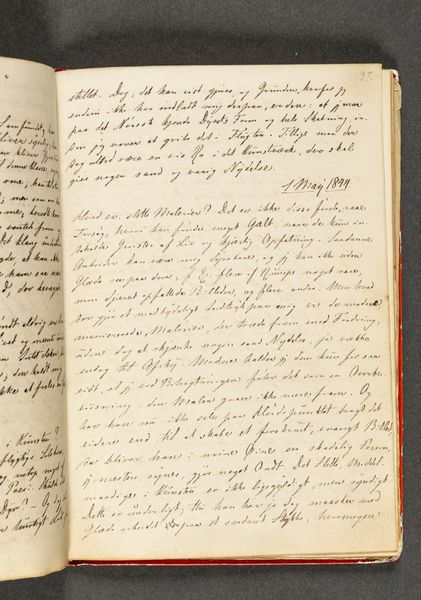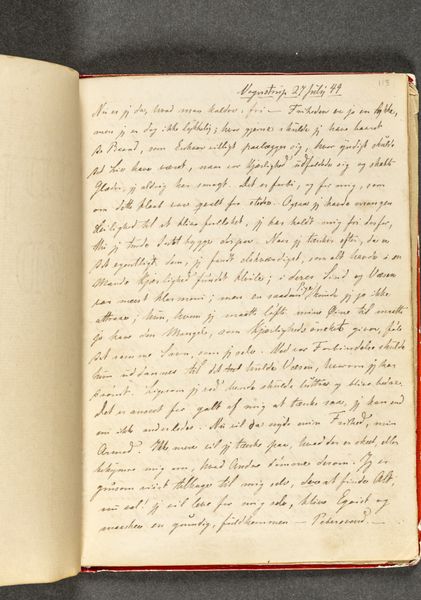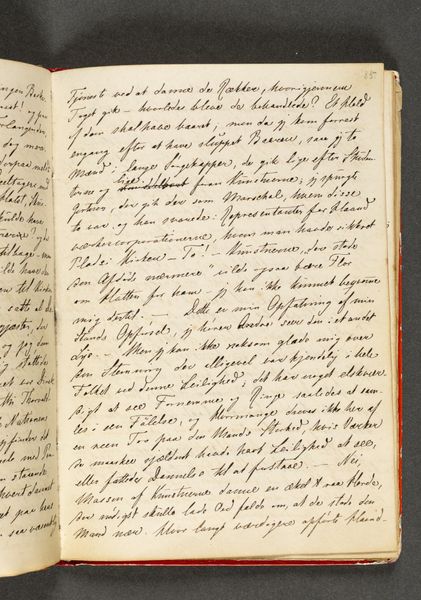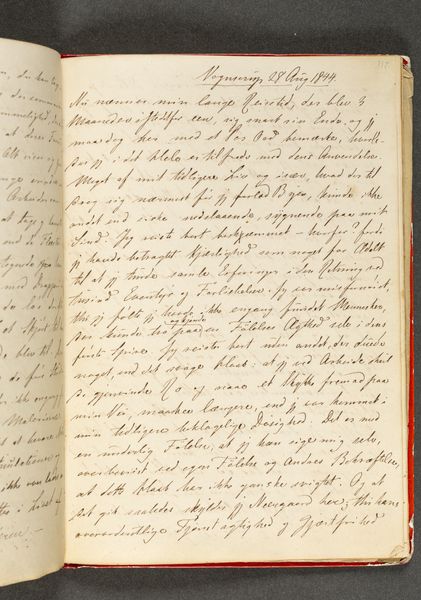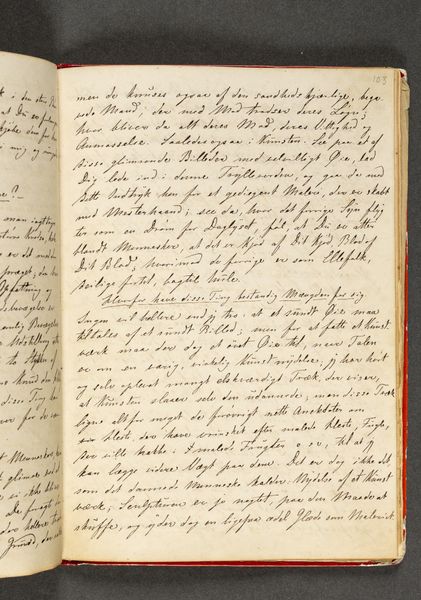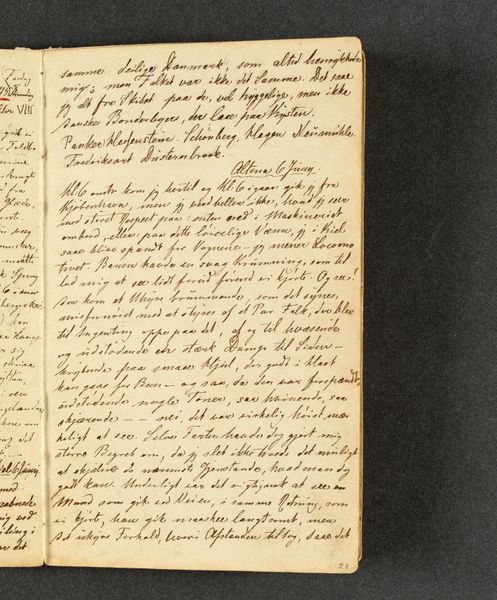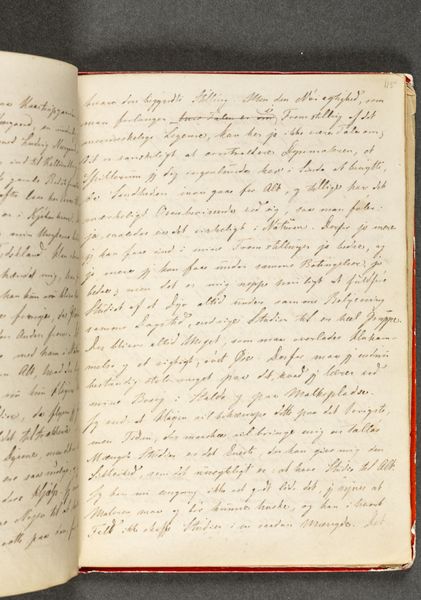
drawing, textile, paper, ink
#
drawing
#
textile
#
paper
#
ink
#
romanticism
Dimensions: 192 mm (height) x 133 mm (width) (bladmaal)
Editor: So this is *Nissen og Trolden. Dagbog. Side 133*, a page from Johan Thomas Lundbye’s diary, made between 1840 and 1844, with ink on paper. Looking at the handwritten text, I am struck by the contrast between the seemingly personal nature of a diary entry and the formality of the script. What do you see in this piece? Curator: I see a potent site of intersection, a confluence of personal expression and societal norms, class and artistic intent. Lundbye's diary, seemingly a private space, is here made public. The very act of writing, of documenting his thoughts in ink on paper, was a privilege linked to class, gender and literacy. Consider what voices might have been excluded. How does knowing that complicate your interpretation? Editor: That's a really interesting point. It makes me think about how even personal reflections can be shaped by social forces. Did Lundbye ever intend this to be seen by others? Curator: That's the critical question, isn't it? We can only speculate. However, by bringing this "private" document into the public sphere of the museum, we participate in a larger dialogue. The content of his writings—we might ask ourselves how the themes or Romanticism prevalent at the time could have limited or shaped his own views or how his views might challenge it. Editor: I guess I hadn't considered the politics of a diary before! Seeing it as a historical document, shaped by and reflecting social power, definitely changes how I see it. Curator: Exactly! We should continuously question what constitutes art, what history gets told, and from whose perspective. This way of observing moves us towards a more intersectional understanding of art.
Comments
No comments
Be the first to comment and join the conversation on the ultimate creative platform.
